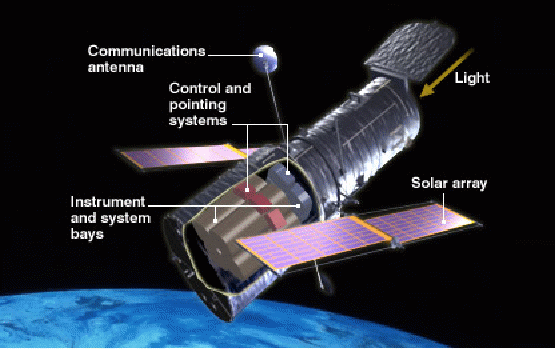Telescopes on Earth do not take the best pictures of planets, stars or galaxies. Light from these objects is scattered by the atmosphere or obscured by light from cities. Even the best Earth based telescopes, situated high on mountaintops far away from the nearest city suffer to some degree from these effects, and many types of star or galaxy cannot be completely photographed because they emit radiation in the![]() X – Ray or UV part of the electromagnetic spectrum and this radiation does not penetrate below the ozone lay high up in the atmosphere.
X – Ray or UV part of the electromagnetic spectrum and this radiation does not penetrate below the ozone lay high up in the atmosphere.
The only way to take near perfect photographs is to put telescopes in space. Space agencies have now put a wide range of telescopes into space, able to take images of the Universe and everything in it at all wavelengths without interference from the Earth's atmosphere. The best known space telescope is the Hubble telescope, which has enabled us to make highly accurate estimates of the age of the Universe and has enabled the discovery of the mysterious 'dark energy'.

Space telescopes have big disadvantages though. They are very expensive, and one develops a fault it may not be possible to repair it – when the Hubble telescope was discovered to have a fault, a repair mission had to be mounted. This was the first mission of it's type. A ground based telescope has a staff in constant attendance, able to carry out repairs and upgrade the telescope on a regular basis, but a space telescope must be operated from the ground as a remote instrument.
